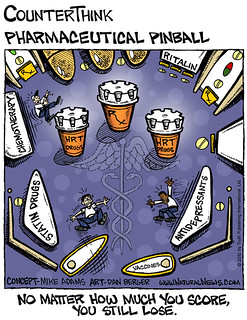 |
| Pharmaceutical Pinball (Photo credit: DES Daughter) |
Healthcare will not ever be about prevention. It is cogent to say that the economics of cure are unsustainable, but healthcare is not about helmets and seatbelts, or electric lighting or piped water or soap or ....
No-one gets paid to prevent anything. Insurers get paid to mitigate risk not eliminate it. So, too, do pharmaceutical companies. And sin taxes are essentially risk premiums - that is insurance products and bad ones at that, priced by political calculus rather than actuarial coefficients.

